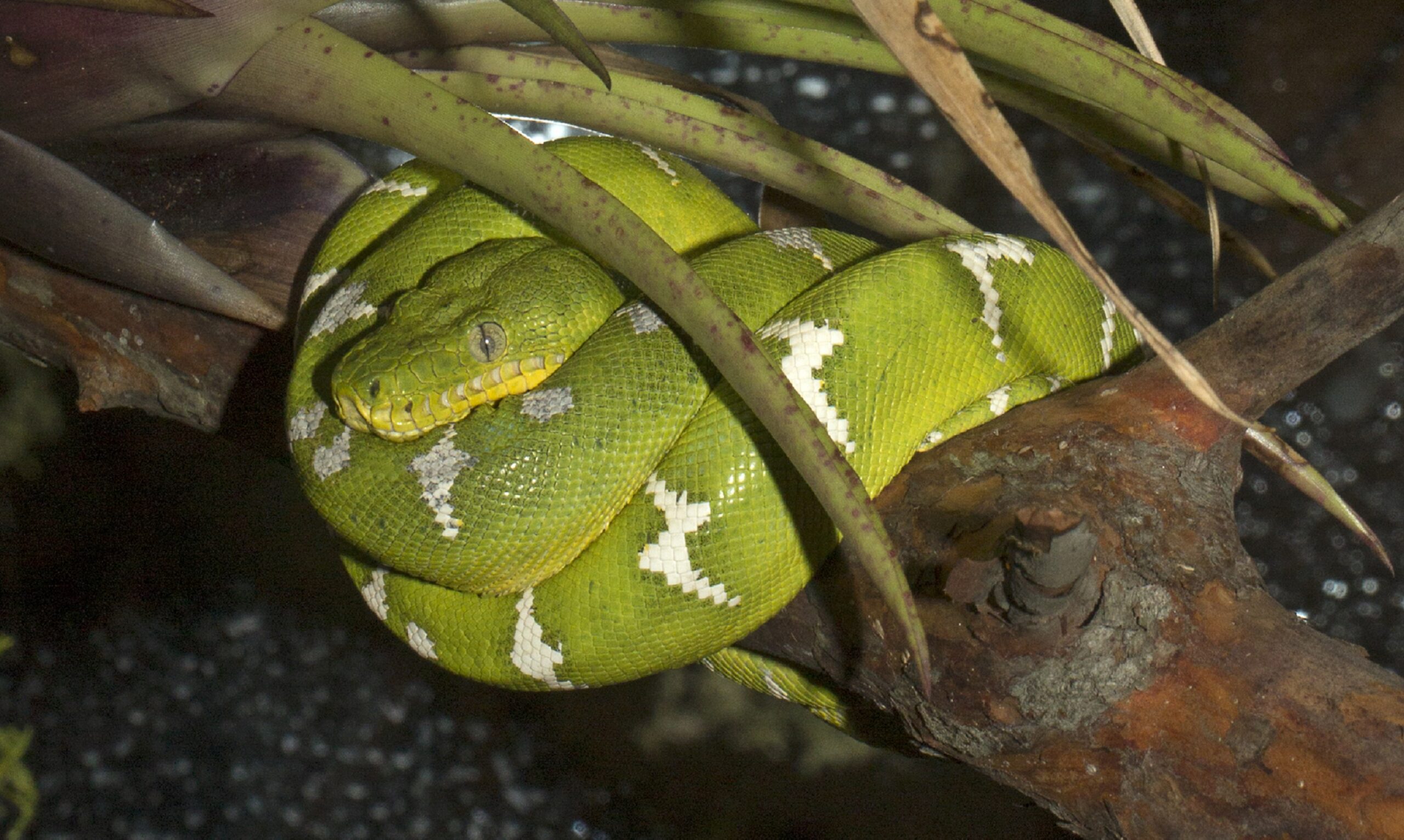Emerald tree boa
Corallus caninus

At the Zoo
South American Tropical Rainforest and Aviary
Fascinating Facts
- Emerald tree boas were given the scientific name “caninus” due to their dog-like appearance in profile.
- Emerald tree boas have large heat sensors with which they can sense infrared radiation and detect prey.
- They have a prehensile tail, which they use to secure themselves in a tree, in their distinctive coiled pose.
- They have sharp teeth, which pierce prey and they will then coil around prey to constrict and kill it.
Physical Characteristics
They have a large head with sharp teeth and vertical pupils similar to a cat. Adults are bright green in color with a white zigzag or diamond pattern and a cream-colored belly. Their size and pattern can vary by location, with some emerald tree boas reaching up to ten feet in length although most are between four and six feet in length. Babies are reddish or orangish in color when born, turning their distinctive emerald shade between six months and a year.
Habitat/Diet
Emerald tree boas are almost exclusively arboreal and are found in lowland tropical rainforest in the Amazon Basin, in parts of Venezuela, Colombia, Peru, Bolivia, Guyana, French Guiana, Suriname and Brazil.
Social Behavior
Males become sexually mature between three and four years and females between four and five years. Females will breed every two years. After a seven month gestation period, she will give birth to three to eight live young.
Status In The Wild
Not yet assessed by IUCN
